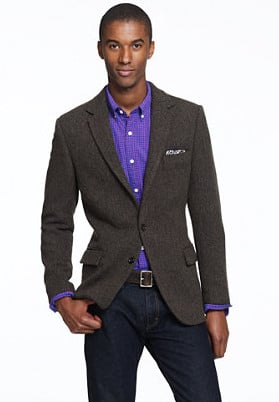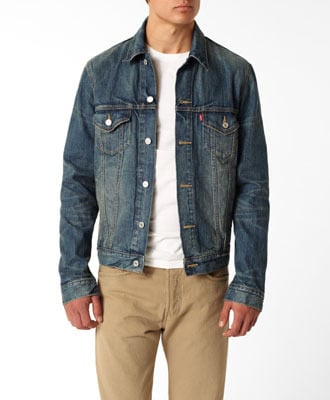Custom suits and imported silk ties look great, but they’re not a lot of use to young men in their late teens and early 20s.
Even if you could afford that kind of a wardrobe (most can’t), there’s no place to wear it – it’s far too formal for socializing with 20-somethings, and very few men are walking out of college and straight into high-powered financial or legal offices.
So much of the advice on how to dress well as a man isn’t all that useful for high school and college students, or even for post-grad students and working 20-somethings. A good suit is useful to own, but not something you’re going to be wearing when you go out with friends.
So what to wear instead?
The trick is diversifying – taking the same casual level of dress that most young men wear, and adding new looks to it to stay sharp without looking stuffy.
The Varied Wardrobe: A Young Man’s Friend
It’s safe to assume that most young men have a couple pairs of jeans, some T-shirts, a sweatshirt or two, and maybe a few button-down shirts in their wardrobe. If you don’t have those, you’re either unusually well-dressed or very inventive.
The way to go from looking like everyone else to looking sharp and stylish is to take those basic wardrobe pieces and swap a few of them out for pieces that are nicer, but aren’t necessarily any more formal. When everyone else is wearing jeans and T-shirts or hoodies, you stand out by being the guy in something a little different.
Here are a few basic staples of most young men’s wardrobes, and some alternatives to them that can be worn stylishly but casually:
Blue jeans – Swap them for colored corduroys, earth-tone cotton slacks, gray wool flannel trousers, or just jeans in a darker color and close fit. Even the simple upgrade from light blue work jeans to dark, stylish, contrast-stitched jeans goes a long way in improving your style.
T-shirts – Replace them with polo shirts, lightweight long-sleeve T-shirts, henley shirts, Breton tops, and other light, but distinct, styles. If you do wear a T-shirt, something with a solid color and either no design or an artistic design (rather than a band name or sports team) is best.
Hoodies – Swap them for casual collared shirts, plaid flannels, cotton sweaters, lightweight cashmere sweaters, sweater-vests, and cardigans.
Coats – Keep the thick winter coat for when you really need it, but add blazers and sports jackets to the fall and spring wardrobe. Throwing a casual jacket on over even just a T-shirt and jeans instantly upgrades the look.
Sneakers – Swap ‘em for casual leather shoes. Saddle shoes, wingtips, brogues, loafers – there’s a lot of options here. If you do want to keep sneakers in the wardrobe, go for colored canvas options (like Converse All-Stars) to keep it stylish.
These are all just examples of a simple point: the more things you have in your wardrobe that aren’t the same old blue jeans and T-shirts, the sharper you’ll look. Small upgrades go a long way in casual company.
Items You Might Not Own (But Probably Should)
So what are some pieces that young men can wear to break out of the mold a little?
These are a few that are worth knowing about. You probably can’t add them all to the wardrobe at once, but if you’re working on adding variety a few pieces at a time, these would be worth your while:
Jackets and Coats
Sports jackets – These are probably the easiest way to dress up any casual outfit. Throw a blazer or sports jacket on and suddenly you’re classy. Not particularly formal, but certainly sharper than your peers, and with an almost infinite variety of colors and patterns out there to choose from you can add quite a bit of uniqueness to your wardrobe with only a few pieces.
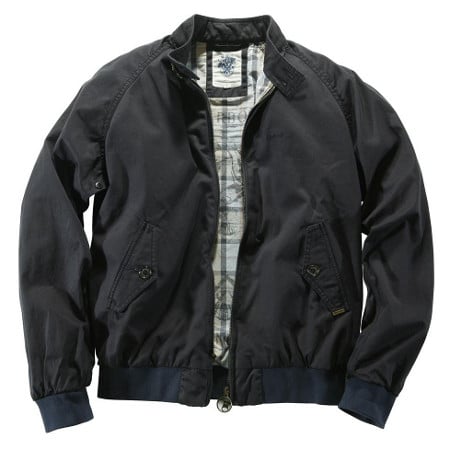
Blouson – A tight-waisted descendent of WWII-era field jackets, this is a good option for times when a sports jacket with lapels feels a little too dressy. It has a timeless feel that reminds people of old movies, war heroes, and middle America.
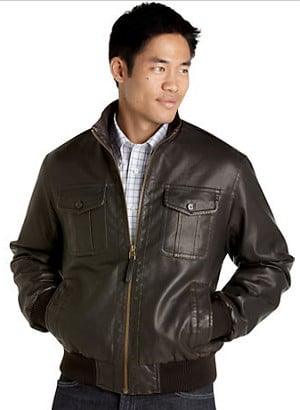
Leather jackets – Another good casual jacket option, you’ve got your choice of a couple styles, ranging from the heavy, lined bomber jacket to tight-fitted moto jackets. They have a little “tough guy” swagger to them.
Jean jackets – Again available in lots of styles, these shouldn’t be worn with matching denim (blue jeans and a blue jean jacket is no good), but look great with slacks, corduroys, or in some cases, darker denim, though mixing denims should always be done carefully.
Overcoats – A long wool overcoat is something many young men lack, and something that becomes invaluable in cold or wet weather when you’re dressing up. Throwing a puffy winter parka over a suit or nice jacket ruins the whole look. Keep an eye on second-hand shops if you can’t afford one new off the rack — a good Chesterfield or polo coat is the ideal companion to your nicer outfits.
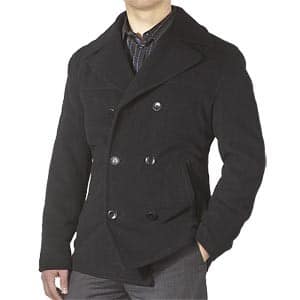
Pea Coats – Originally worn by sailors, pea coats are often made from navy-colored or black heavy wool, and feature broad lapels, double-breasted fronts, and large buttons. Looks sharp, and pulls together both casual and slightly more formal outfits.
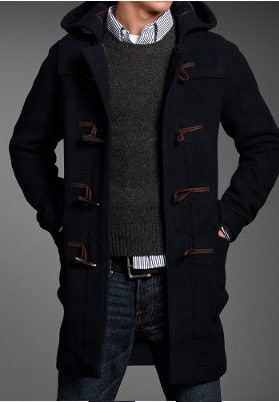
Duffle coats – Also called toggle coats for their typical style of button, duffel coats were originally military surplus and later became a staple of European intellectuals and students. They’re still classic campus wear, and striking these days for their uniqueness (especially on American campuses, where they were never quite as ubiquitous).
Barbour jackets – Wet weather gear from England, the Barbour has various imitators from brands like L.L.Bean and Land’s End, but the originals are sturdier – being made with waterproofed cotton with a quilted lining. They look rugged and outdoorsy, and have the added benefit of keeping you dry without being a shiny plastic poncho or something similarly unstylish.
Want more help dressing for cold weather? Visit this classic AOM article.


